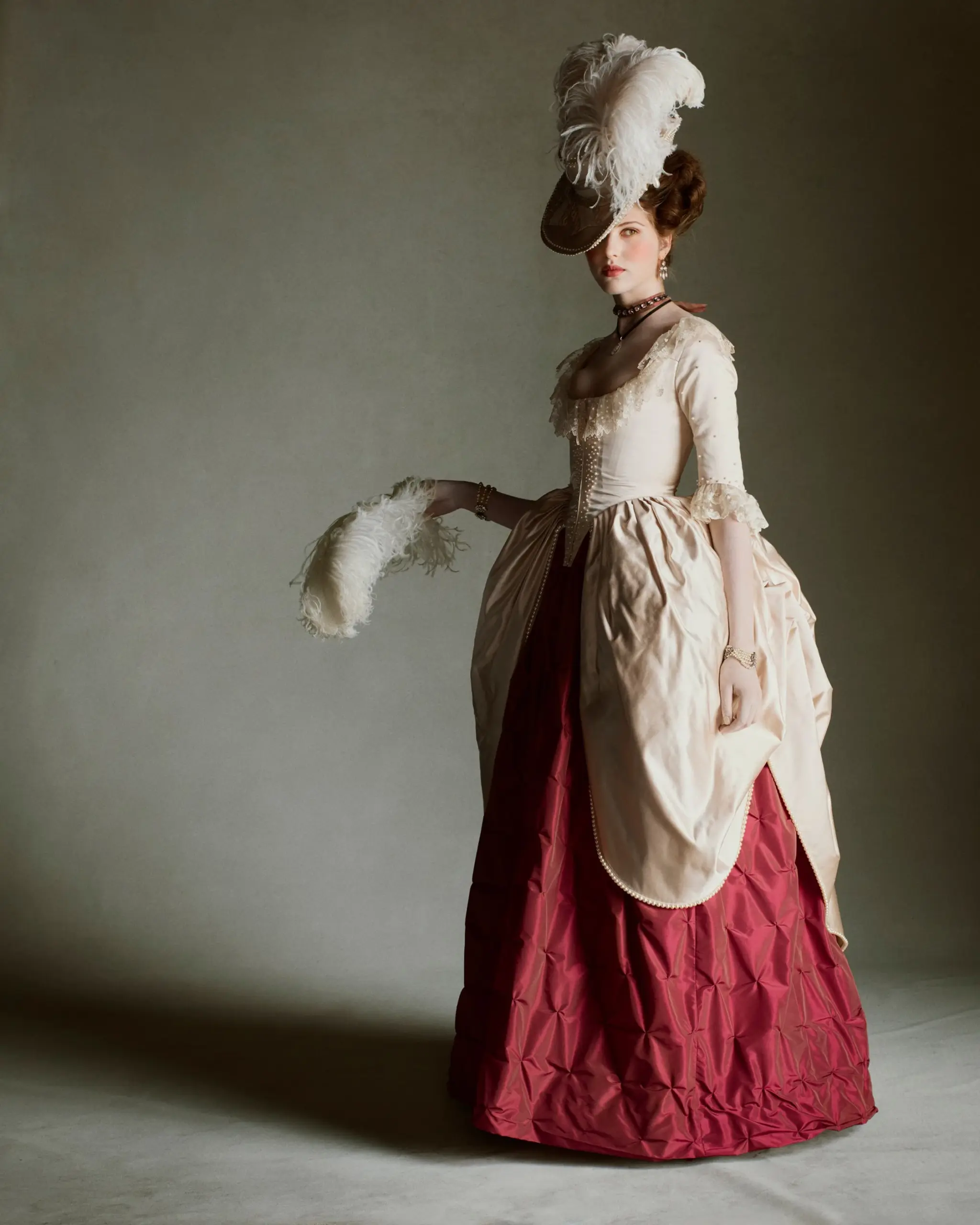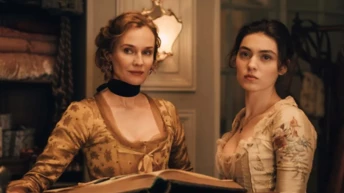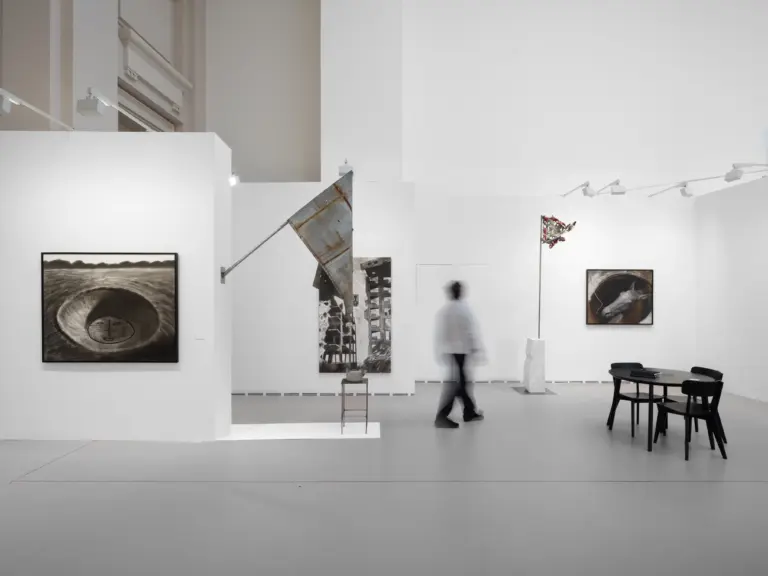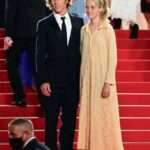What will happen if today's fashion designers reimagine the most familiar costumes in the history of cinema? What do these legendary characters look like, as their images were created by the creative directors of Louis Vuitton, Balmain, Marc Jacobs and Miu Miu? This material contains costumes from eight cult films – “Barry London”, “Marie Antoinette”, “Dune”, “Black Panther”, “Orlando”, “Edward Knifehands”, “Once Upon a Time in Hollywood” and “The Great Gatsby”. They were reinterpreted by modern designers who created current versions of the images specially for Vogue World: Hollywood. This history shows how film fashion shapes culture and how film costumes are part of world history.
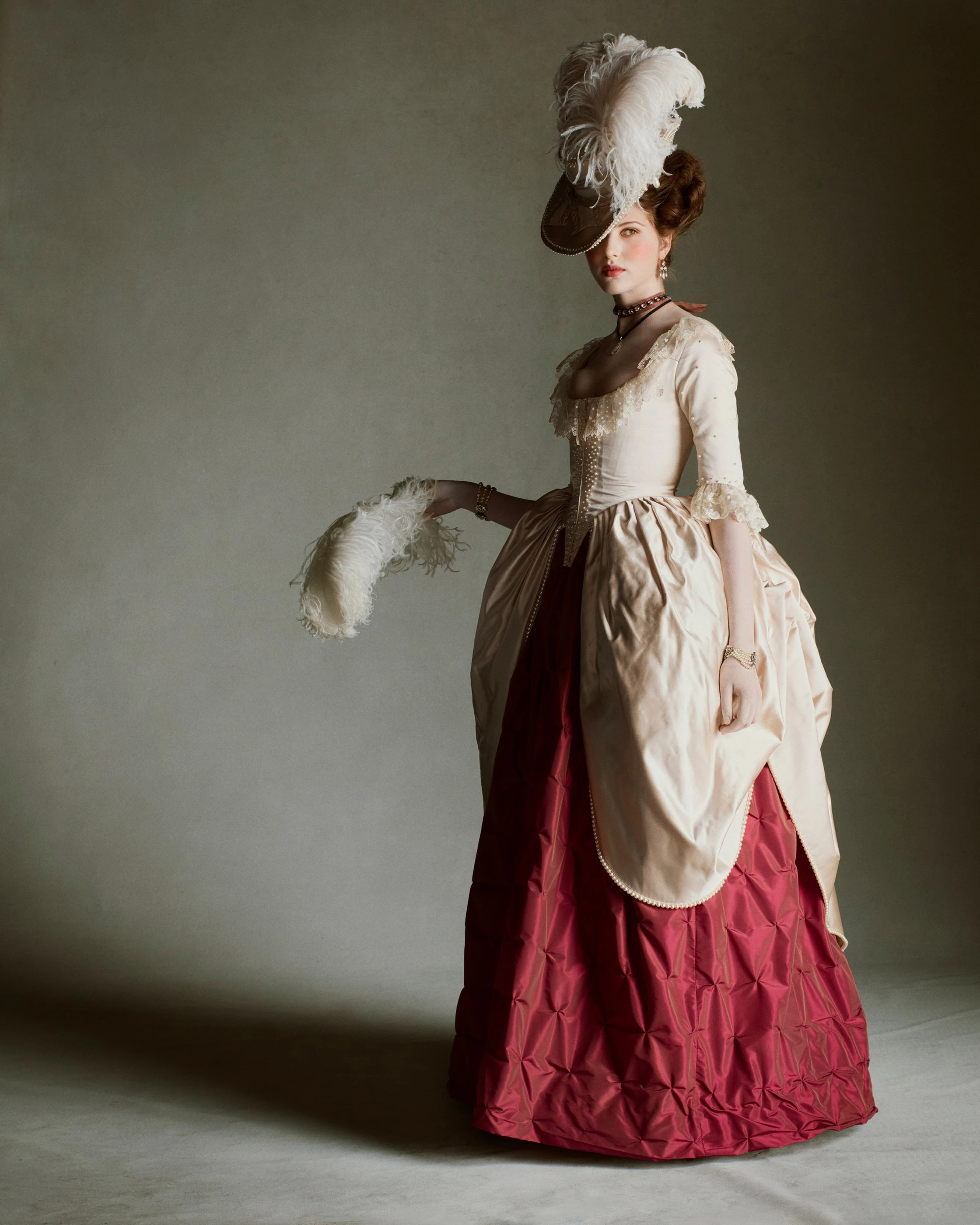 Model Angelina Kendall wearing a costume from Stanley Kubrick's historical epic “Barry London” (1975), worn by Marisa Berenson in the film
Model Angelina Kendall wearing a costume from Stanley Kubrick's historical epic “Barry London” (1975), worn by Marisa Berenson in the film
“Marie Antoinette”, 2006
Italian Milena Canonero is one of the most famous costume artists in the world. She has won four Oscars and nine more nominations. They are inextricably linked with the history of film design. Back in 1986, Vogue wrote: “When Canonero creates costumes, it’s not just garniture images—it’s the way she tells the story of a character through fashion.” Our creative handwriting has always been enhanced by attention to detail and color. Although we want to explore the history of costumes in depth, we must not rely on documentary accuracy. “I’m inspired by mysticism and photographs of different eras, just to convey the spirit of the hour,” explains Canonero.
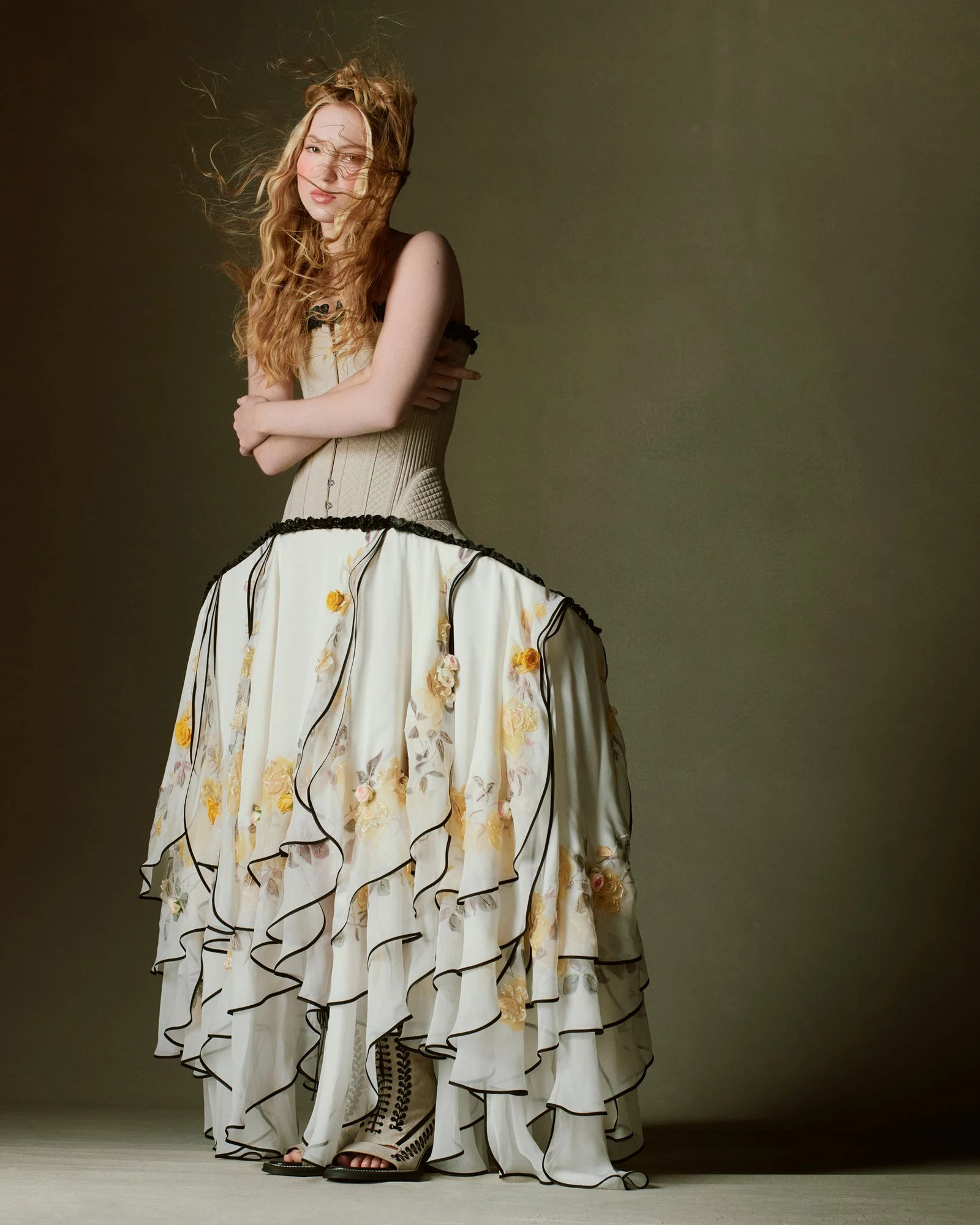 Model Lela Moss wearing Louis Vuitton cloth by Nicolas Ghesquières, inspired by court cloth of the 18th century
Model Lela Moss wearing Louis Vuitton cloth by Nicolas Ghesquières, inspired by court cloth of the 18th century
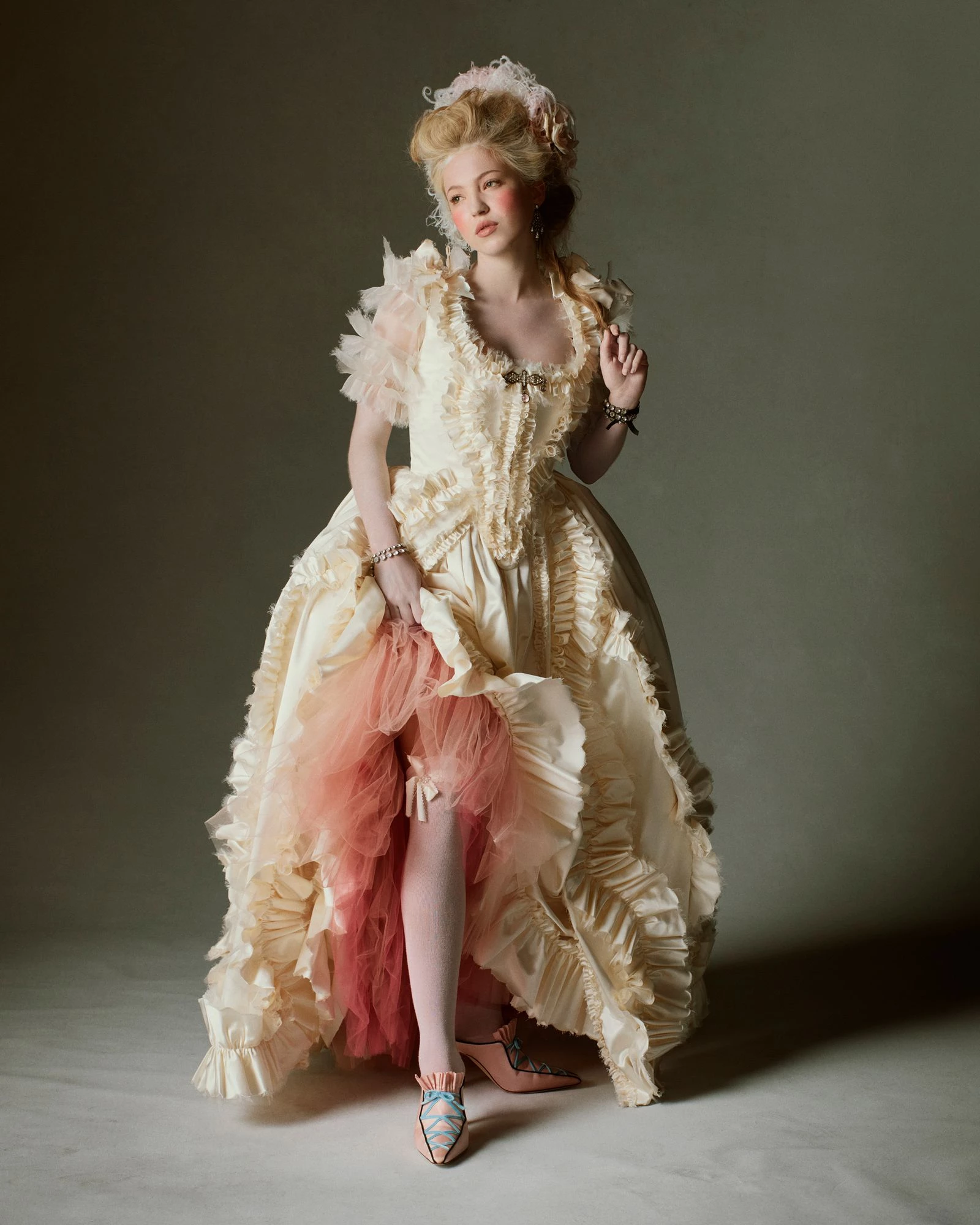 The image is from the film by Sofia Coppoli, created by Milena Canonero and created by Tirelli Costumes for Kirsten Dunst in the role of Queen Marie-Antoinette. Buzz – Manolo Blahnik
The image is from the film by Sofia Coppoli, created by Milena Canonero and created by Tirelli Costumes for Kirsten Dunst in the role of Queen Marie-Antoinette. Buzz – Manolo Blahnik
For Vogue World Hollywood, the creative director of Louis Vuitton, Nicolas Ghesquiere, created sensitive and luxurious cloth in the rococo style of the 18th century, infusing the robot Canonero in the lines “Barry London” by Stanley Kubrick and “Marie Antoinette” Sofia Coppoli.
Dune, 2021
When Denis Vilniov asked Jacqueline West to create costumes for the film “Dune,” she immediately said: “I don’t work in the science fiction genre.” Alas, this made the director happy. “Having said: “I want it to look like this in the future, no matter what,” says West. “I think that by asking me what my work in the film “The Legend of Hugh Glass” deserved, I’m always focusing on realism.”
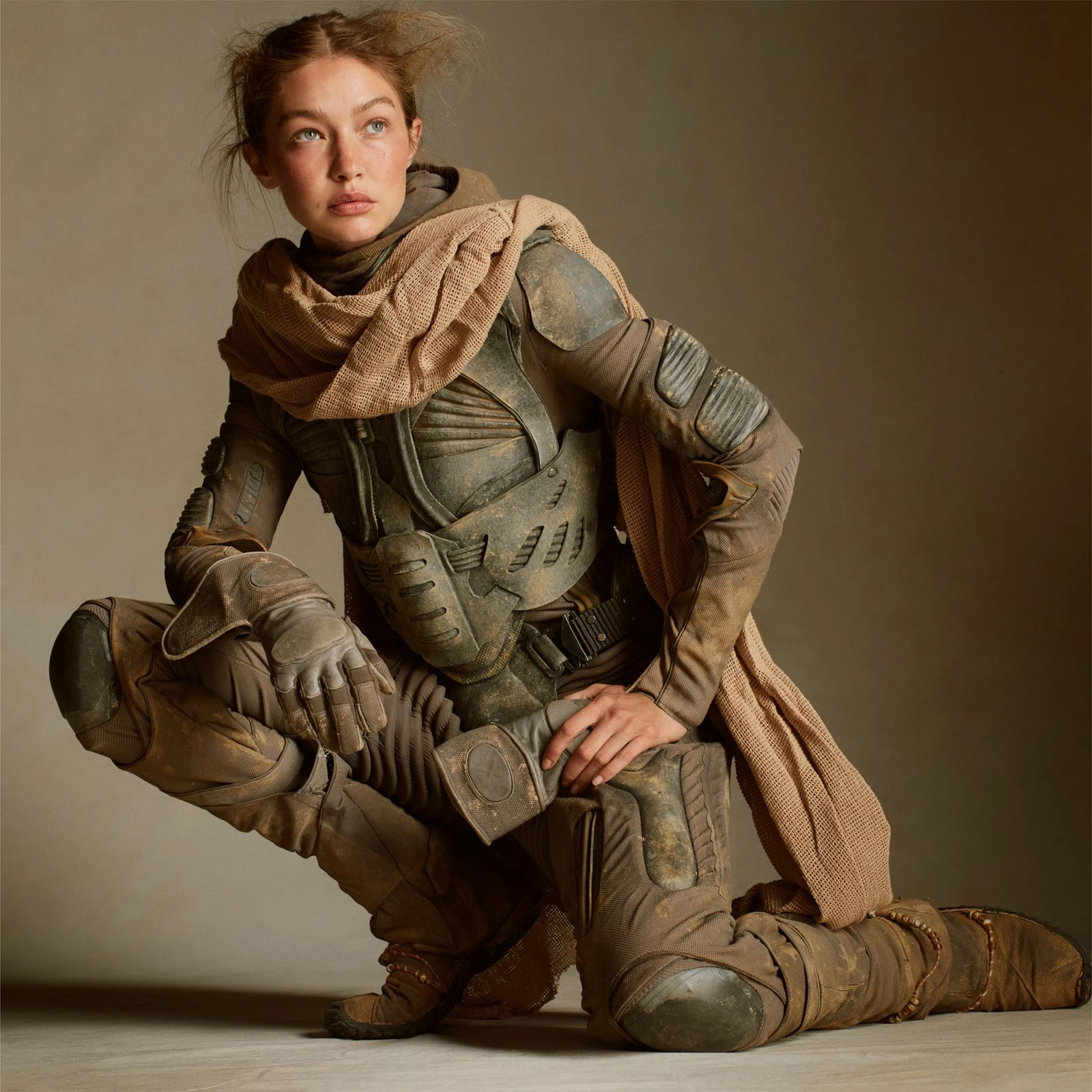 Model Jiji Gadid tries on a costume created by Jacqueline West for the heroine played by Zendaya in the films of Denis Vilniova
Model Jiji Gadid tries on a costume created by Jacqueline West for the heroine played by Zendaya in the films of Denis Vilniova
The artist, who studied the history of mysticism, inhaled the Middle Ages and the culture of Early Africa and the Close Convergence. She did some of the costume design for Dune using detailed descriptions from Frank Herbert's book. “We knew that the suits would be functional, that they would have a water-saving system, or that they would lose their armor. The men were warriors, and they needed to show it.”
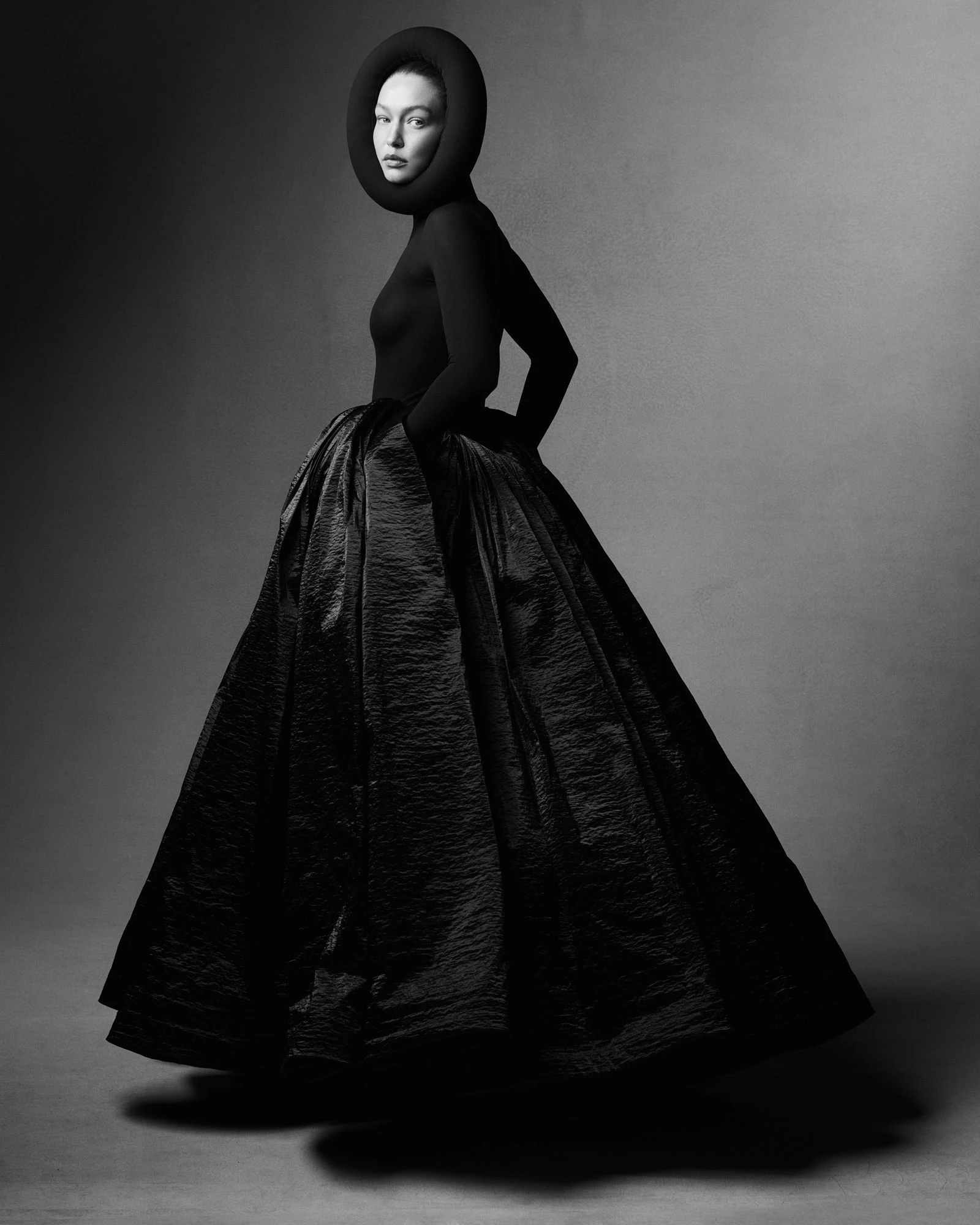 The thin top and the back of Alaïa strengthen to the long dark tents of the mighty Order of the Bene Gesserit in the whole world “Dunes”
The thin top and the back of Alaïa strengthen to the long dark tents of the mighty Order of the Bene Gesserit in the whole world “Dunes”
Vesti knows that she did everything until she heard from Vilnyov: “It’s more fitting for me.” This costume design in cinema is an example of how style and practicality can combine into one aesthetic.
“Chorna Panther”, 2018
“Costume design is the essence of the whole world,” says Ruth Carter, Dvorazov’s Oscar winner for her work on the films “Black Panther” and “Black Panther: Wakanda Once Upon a Time.” This work has become an example of how fashion in cinema can convey history, symbolism and reality.
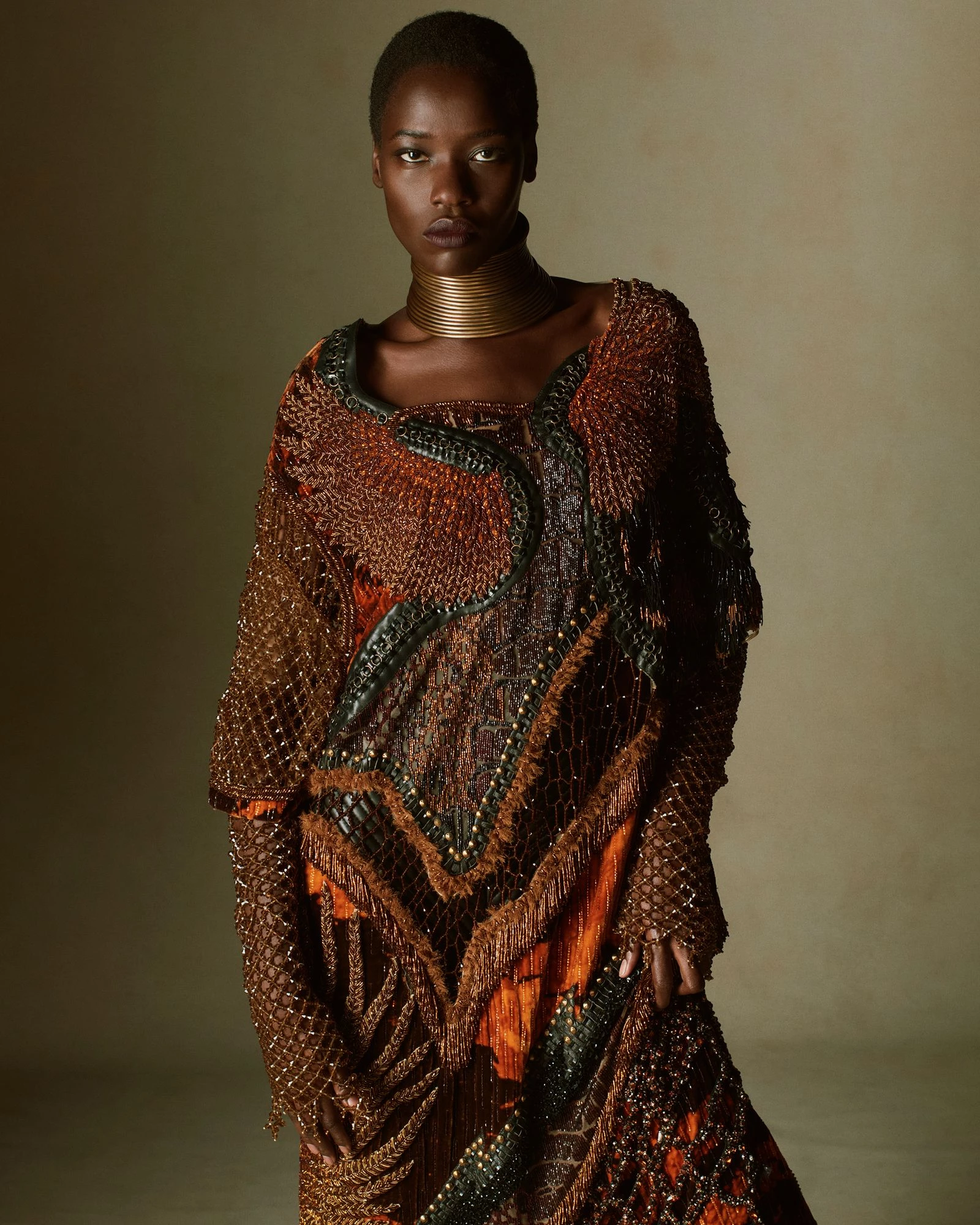 Model Awar Odyang in a Balmain look, created as an interpretation of Ruth Carter's designs for the film “Black Panther” from Marvel Studios
Model Awar Odyang in a Balmain look, created as an interpretation of Ruth Carter's designs for the film “Black Panther” from Marvel Studios
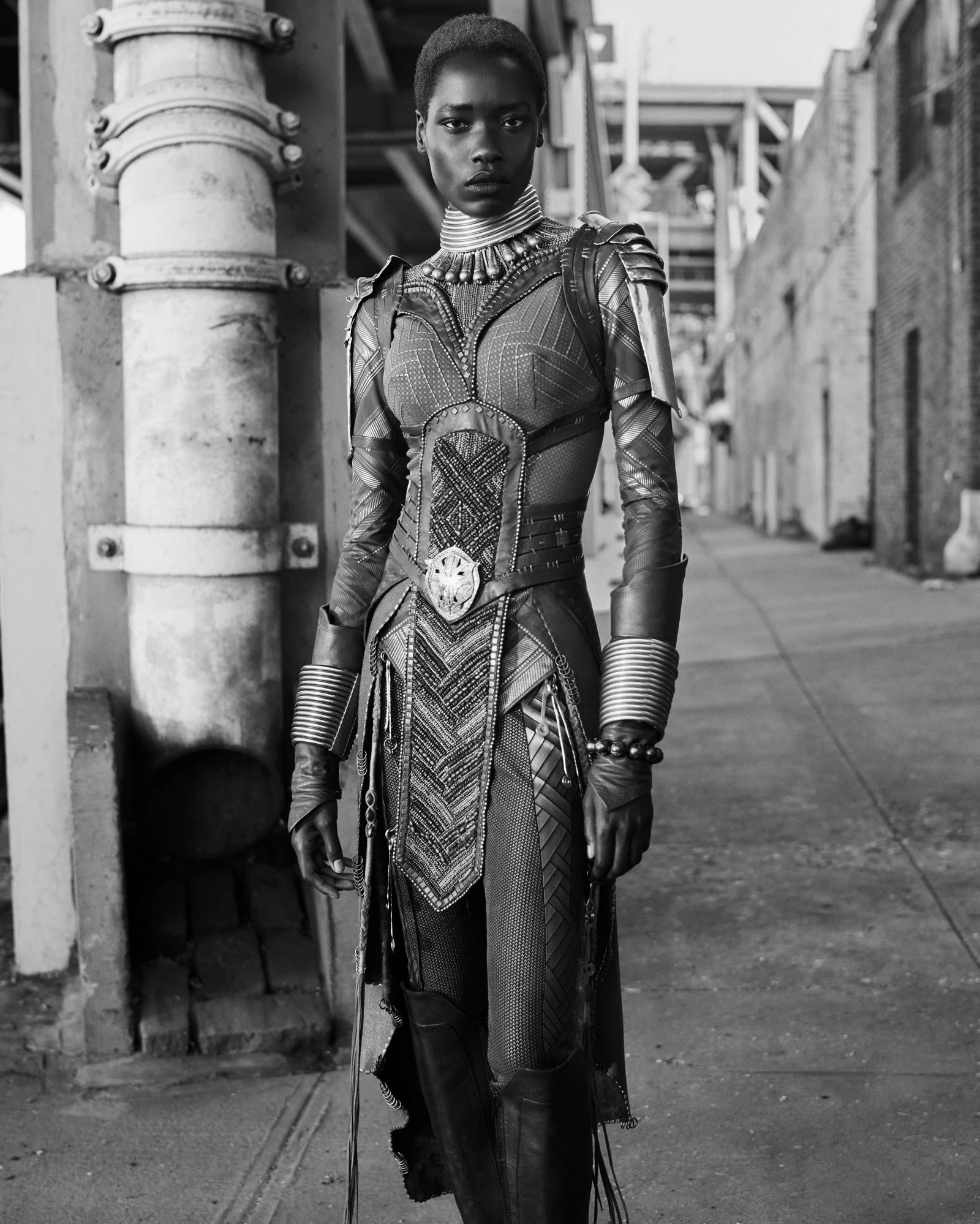 One of Ruth Carter's costumes from the movie “Black Panther”
One of Ruth Carter's costumes from the movie “Black Panther”
Carter says: “When Chadwick Boseman was already trying on the suit, it was an incredible moment. The power was visible – I couldn’t help but feel: Black Panther just standing in my office.” Besides, the suit had to be thoroughly polished. “We added several elements to make the costume easier to collapse, and a special mechanism for the mask. It’s a foldable, but important process,” Carter added. The same attention to detail was evident in the costumes of the Dora Milaje, the female guard of Wakanda. One of these images is demonstrated by model Awar Odyang, who poses in interpretation images by Olive Rousteing for Balmain for Vogue World Hollywood.
Orlando, 1992
“I’ve designed a lot of costumes for a lot of films, but in Orlando I had the greatest freedom of action,” says Sandi Pavel, three-time Oscar winner and BAFTA winner. The sequence of director Sally Potter with Tilda Swinton in the lead role is an example of how movie costumes can convey the philosophy of the hour. “We didn’t compromise on the hundred-hundred-hundred-hundred-hundred-hundred-dad-de-half-hundred-pound accuracy, but we wanted to convey the mood of the era,” says Pavel.
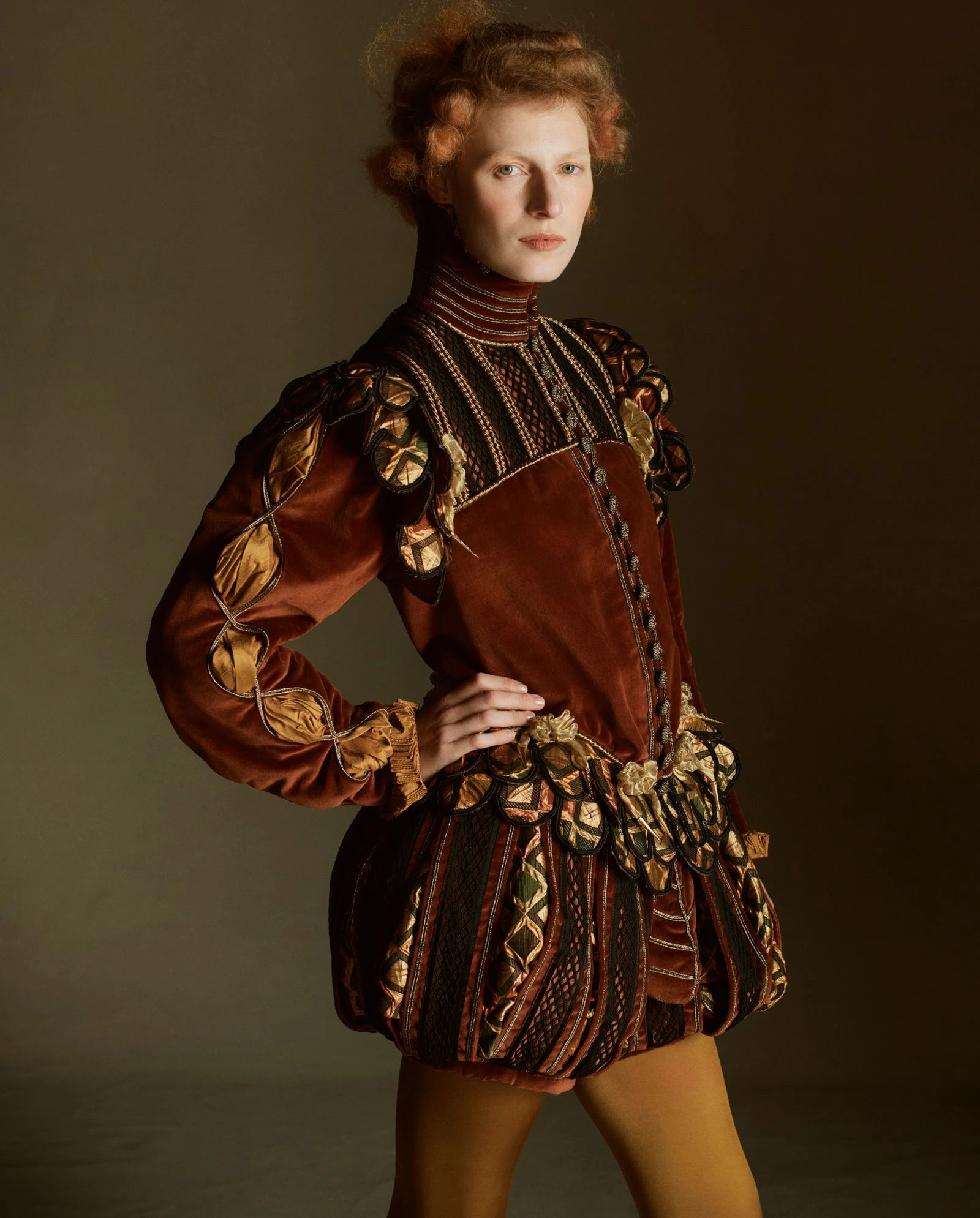 Julia Nobis in a costume created for the film “Orlando”
Julia Nobis in a costume created for the film “Orlando”
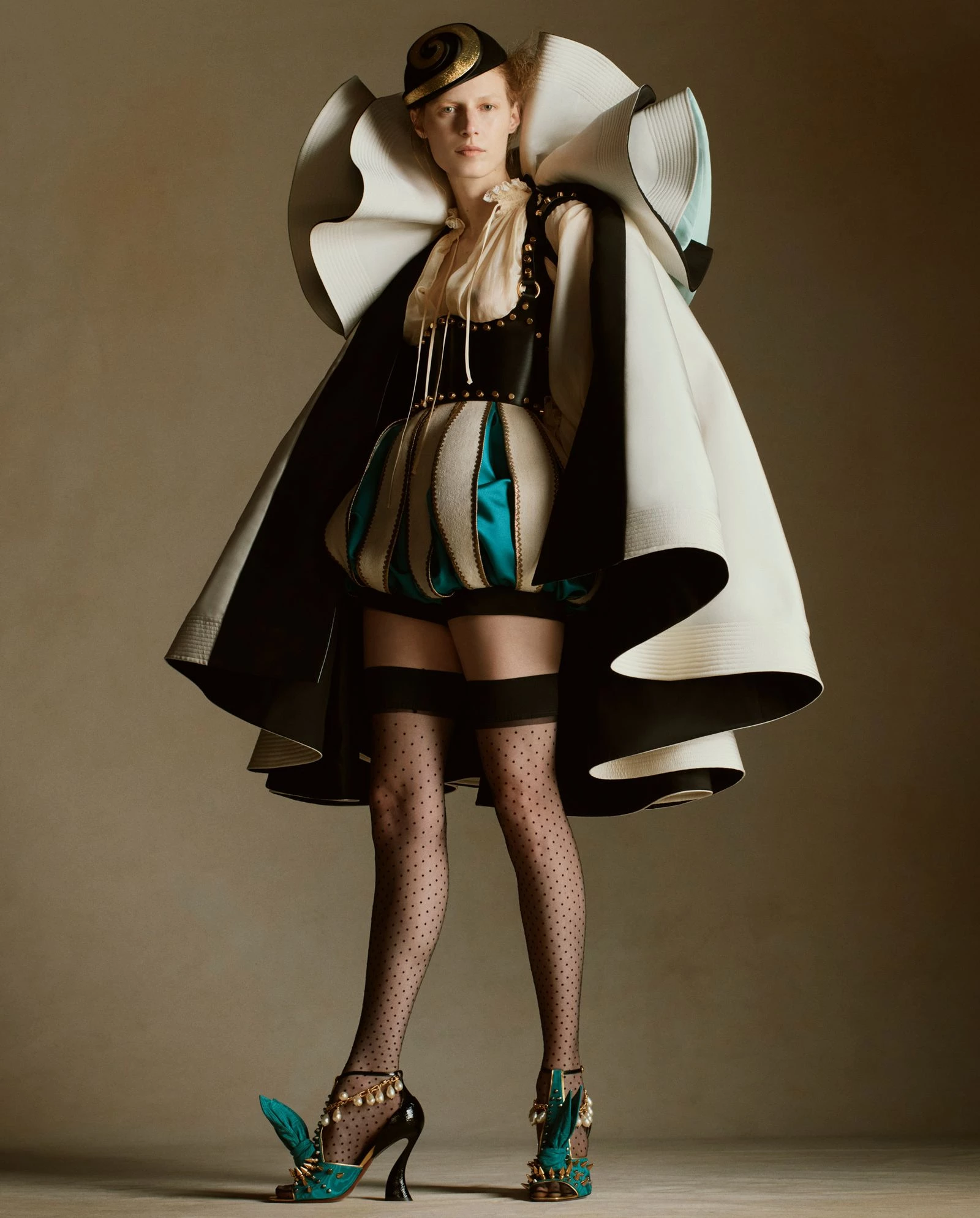 The look from Valentino Haute Couture appears on the roads of Orlando every hour – from the era of Elizabeth I to the 1990s
The look from Valentino Haute Couture appears on the roads of Orlando every hour – from the era of Elizabeth I to the 1990s
Swinton played the role of the created character for Orlando. “I can’t create a costume without knowing who’s wearing it. It’s not just the clothes—it’s part of the character,” adds Pavel. “I sense the secluded mood that the image can be. It’s not just about appearance and color, but about how people are to tell how it collapses, how it shakes. This thought is truly important, and at the same time it creates a character.
“Edward Knifehands”, 1990
“The image of Edward was born on the streets of New York,” says Colleen Atwood, a multiple Oscar winner for costume design before Tim Burton’s films. Vaughn explains that the costume of the cult character was made from materials that could be found in New York traders on Canal Street and Orchard Street – places where they sold surplus hides, belts, metal parts, antiques tools. From these very speeches, the idea was born to create an image of a hero, assembled from various intricacies and parts – a unique bandage, practicality and Victorian style.
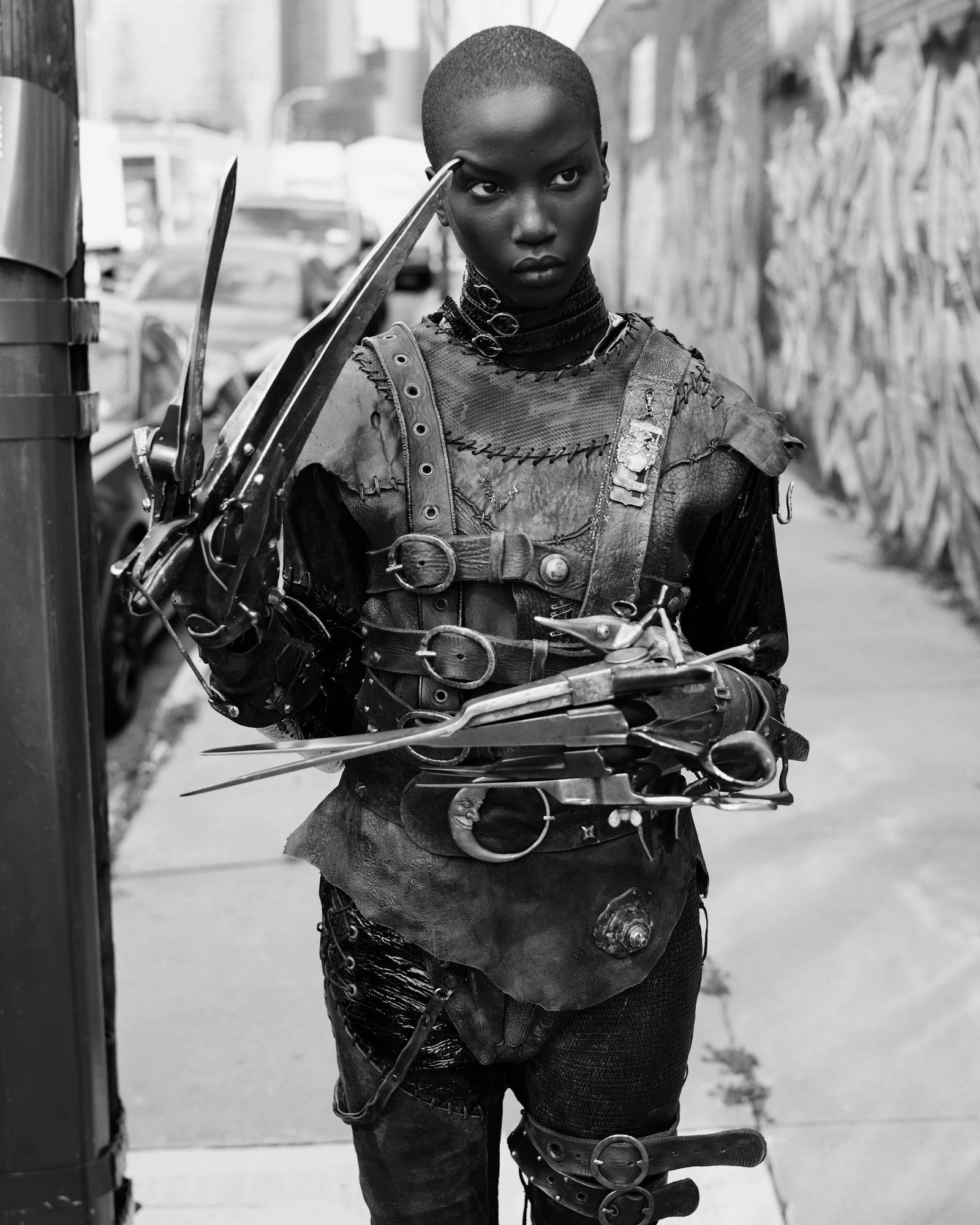 Model Anok Yai in the incredibly foldable and spectacular costume designed by Colleen Atwood for Tim Burton's dark romantic fantasy
Model Anok Yai in the incredibly foldable and spectacular costume designed by Colleen Atwood for Tim Burton's dark romantic fantasy
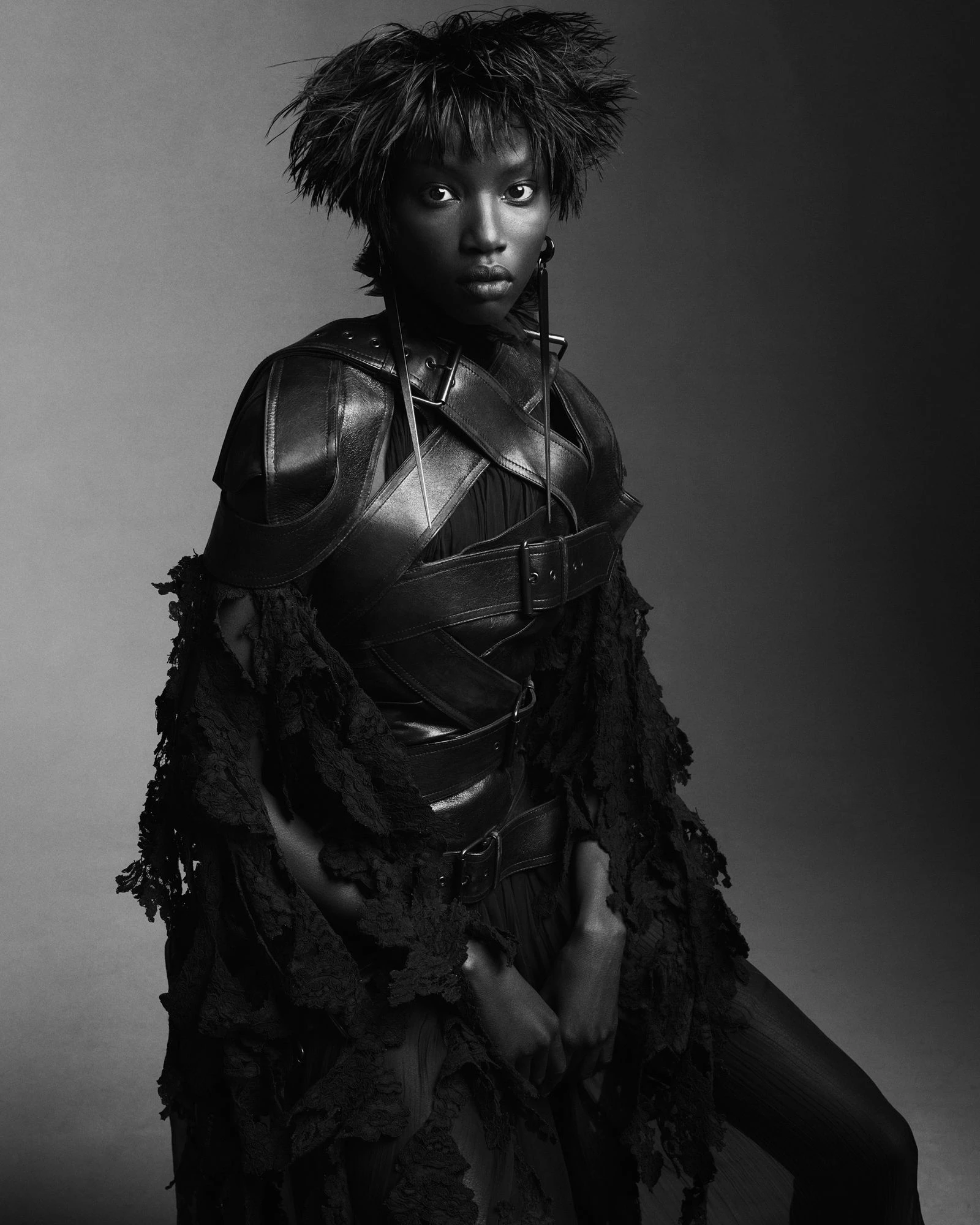 The McQueen look by Sean McGirr, in collaboration with Atwood, retains the gothic drama of the original – with no belts, buckles or frayed textures.
The McQueen look by Sean McGirr, in collaboration with Atwood, retains the gothic drama of the original – with no belts, buckles or frayed textures.
“Edward is the product of Tim’s life,” says Atwood. “I always say that Tim “small people”: he has endless sketches of marvelous creatures that can live with his fate. less rightful point in the created image of Edward.” For Vogue World: Hollywood, Atwood created a new version of the Mr. Scissorhands costume from Anok Yai. The model also appeared in the interpretation of the image of Sean McGirr from McQueen.
“Once Upon a Time in…Hollywood”, 2019
Arianne Phillips specializes in costumes for films based on true stories. Vaughn worked on the images of Bob Dylan and Johnny Cash in “Walk the Line,” and also created the costumes for Sharon Tate in Quentin Tarantino’s “Once Upon a Time in… Hollywood.”
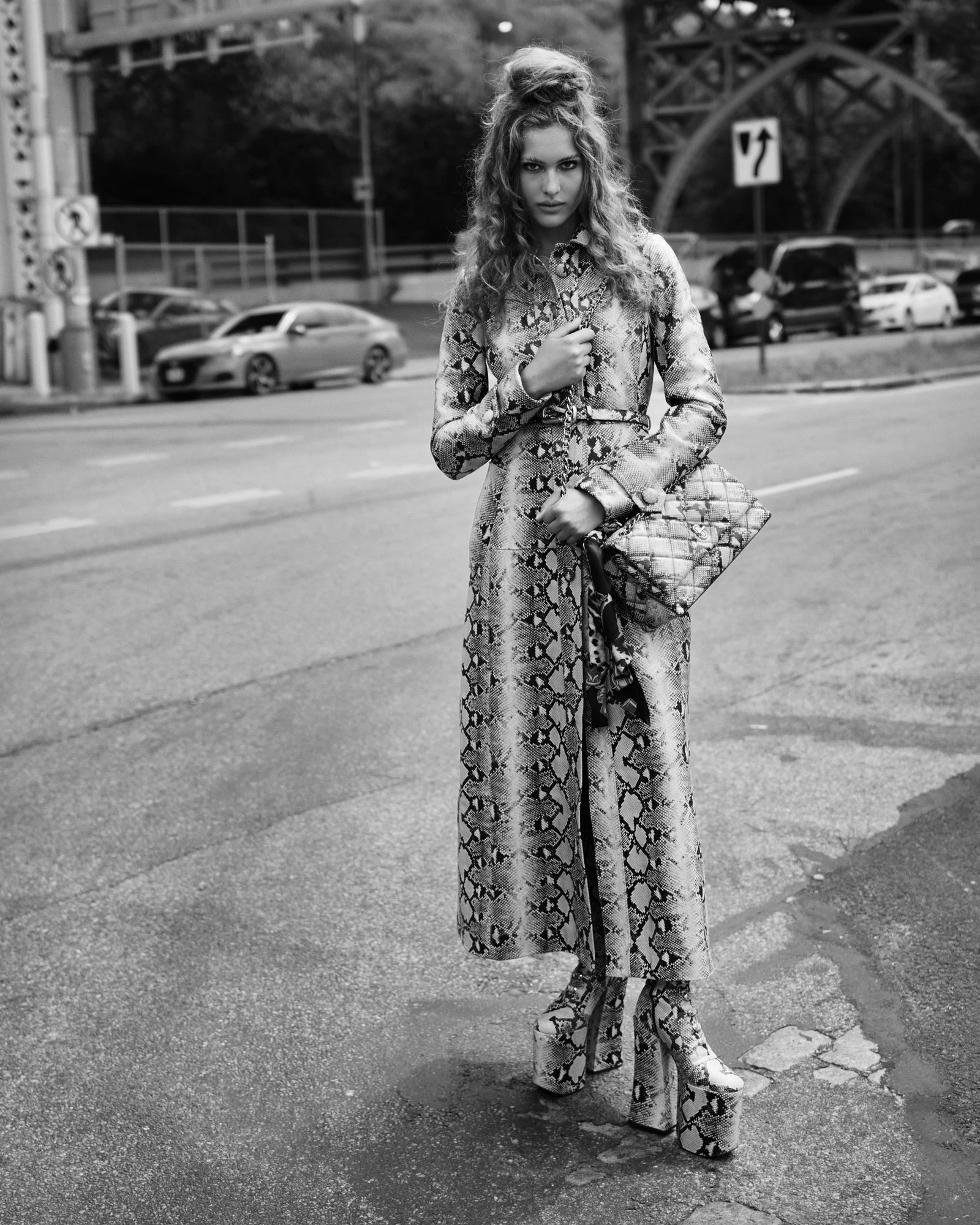 The coat, bag and platform shoes by Marc Jacobs replicate the costume of Arianne Phillips, created for Margot Robbie in the role of Sharon Tate, with maximum accuracy and respect to the original
The coat, bag and platform shoes by Marc Jacobs replicate the costume of Arianne Phillips, created for Margot Robbie in the role of Sharon Tate, with maximum accuracy and respect to the original
“I wanted to portray Sharon as truthfully as possible,” says Phillips. “To be honest, she was a huge style icon of the 1960s.” The python fur coat that Sharon Tate wore at the Playboy Mansion at the Playboy Mansion was modeled after the original Ossie Clark model, which the actor wore at the London premiere of the film “Baby” Rosemary” 1968 rock. Arianne Phillips herself collects Ossie Clark robots. “Sharon and Roman Polanski lived in London in the 1960s, at the height of the period when Carnaby Street became the center of youth culture, fashion and freedom of self-expression,” says Phillips. It was there that the Swinging London style was born – bright, daring, experimental fashion, as inspired by designers Mary Quant and Ossie Clark, as well as the likes of The Beatles, The Rolling Stones and Twins. For Vogue World: Hollywood, Quentin Tarantino kindly agreed to rent an original coat from the film, and Marc Jacobs presented his exact reconstruction.
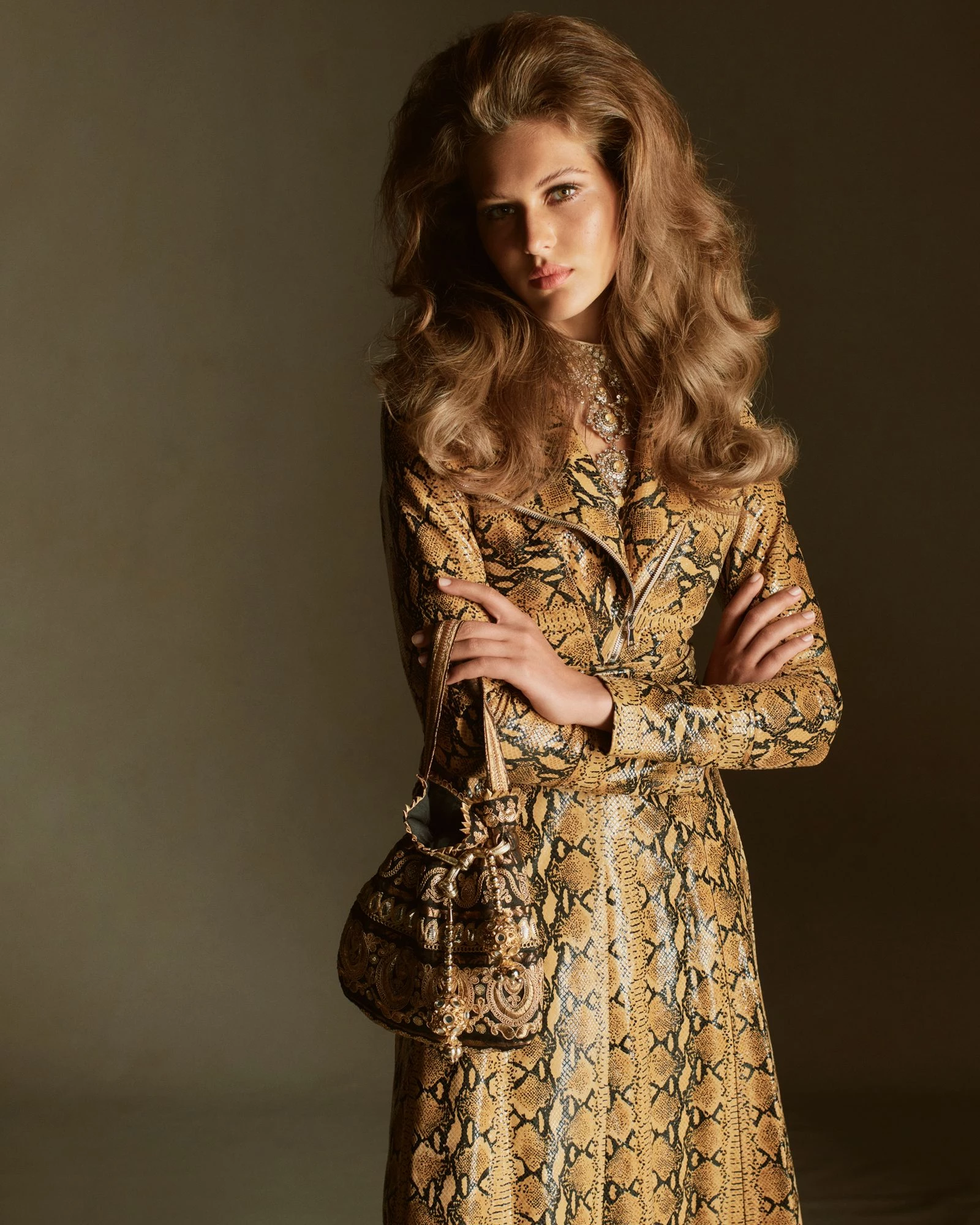 Kendall appears in the original image created by Arianne Phillips for Quentin Tarantino's bow stitch
Kendall appears in the original image created by Arianne Phillips for Quentin Tarantino's bow stitch
“The Great Gatsby”, 2013
Australian costume designer Katherine Martin, another woman in the story of Edit Ged, won two Oscars for one film – in the categories for costume design and production design. Vaughn repeated the two achievements: first – in 2002 for “Moulin Rouge!”, and secondly – in 2014 for “The Great Gatsby”. Their unique talent for combining historical accuracy with contemporary visuality, creating offensive lines behind their costumes that effectively defined the cinematic aesthetics of their era.
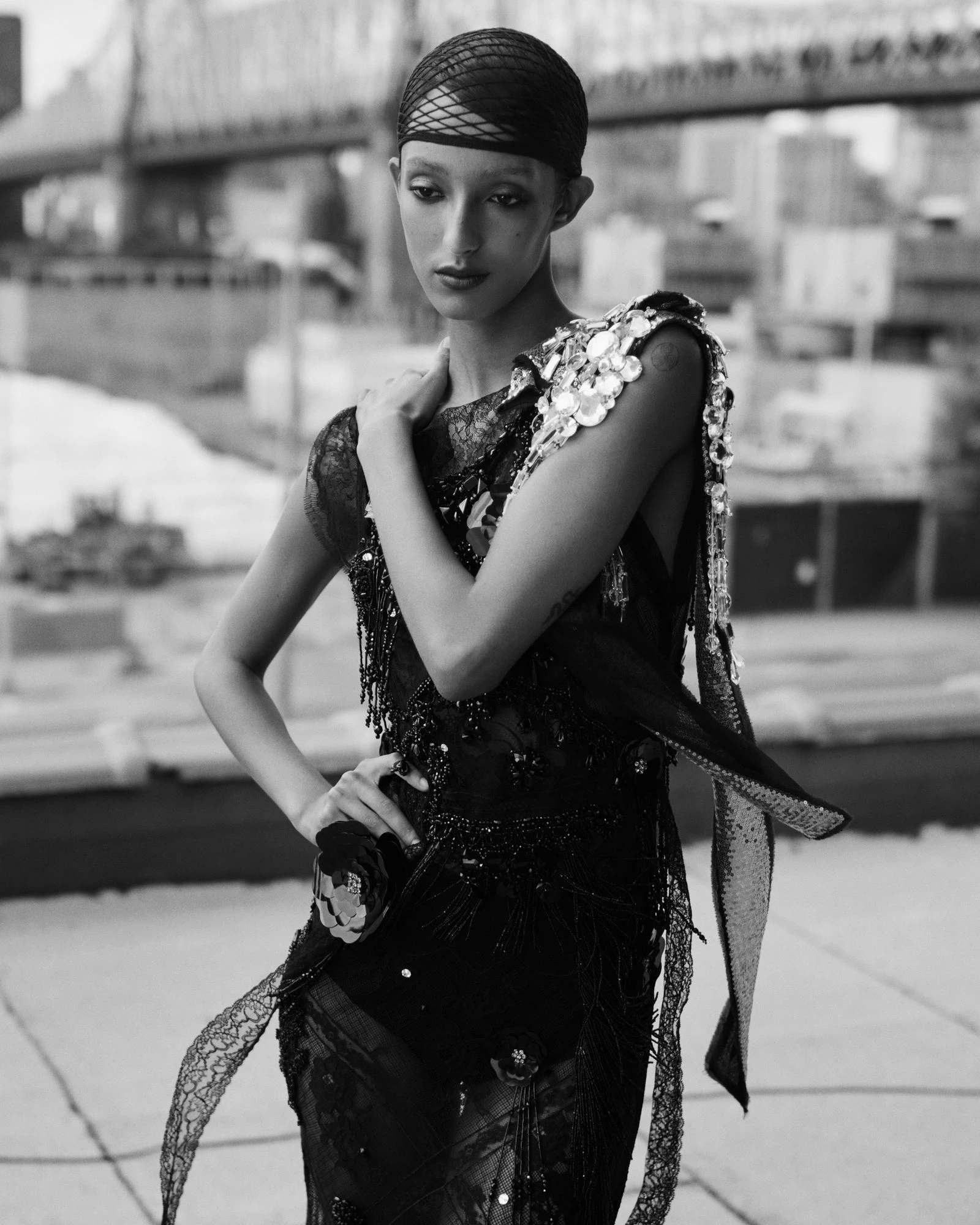 The dark side of Daisy – from the Vikonanny Miu Miu
The dark side of Daisy – from the Vikonanny Miu Miu
“We want the costumes to be based on real silhouettes, textures and fabrics of the 1920s, but at the same time have a little modern look,” says Martin. “We don’t want the old New York in gray tones. We want to create a place that was colorful, sensitive, alive – the way Zelda and Scott Fitzgerald, or any of the characters in the novel, envisioned it.” Martin's costumes were inspired by fashionable illustrations from that era. Vaughn gave priority to form rather than to precise historicity. Martin's best guess is that her hours of work on the film, in collaboration with Maria Prada, helped reimagine the style of the 1920s for a contemporary audience. For Vogue World Hollywood, Prada created a new Daisy shoe – in the look of Miu Miu cloth, inspired by the jazz era.
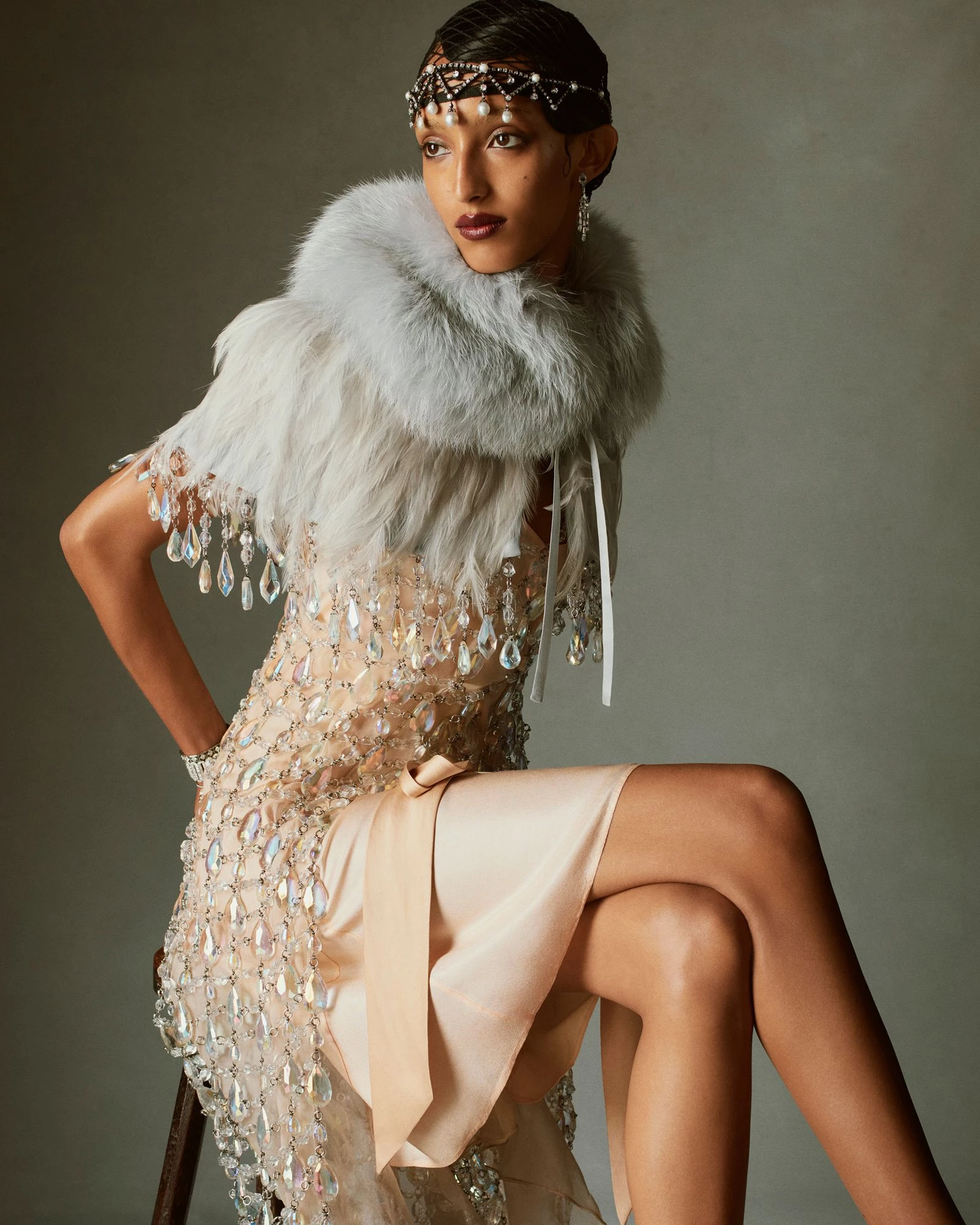 Model Mona Tougaard in the role of the moody Daisy Buchanan in the Prada cloth, reinterpreted by Maria Prada and Katherine Martin for the film by Baz Luhrmann
Model Mona Tougaard in the role of the moody Daisy Buchanan in the Prada cloth, reinterpreted by Maria Prada and Katherine Martin for the film by Baz Luhrmann
Photo: Ethan James Green
Style: Alex Harrington
Hair: Jimmy Paul
Makeup: Kabuki
Manicure: Yuko Tsuchihashi
Tailoring: Hailey Desjardins
Production: Tann Services
Set Design: Julia Wagner
Behind the material vogue.com

